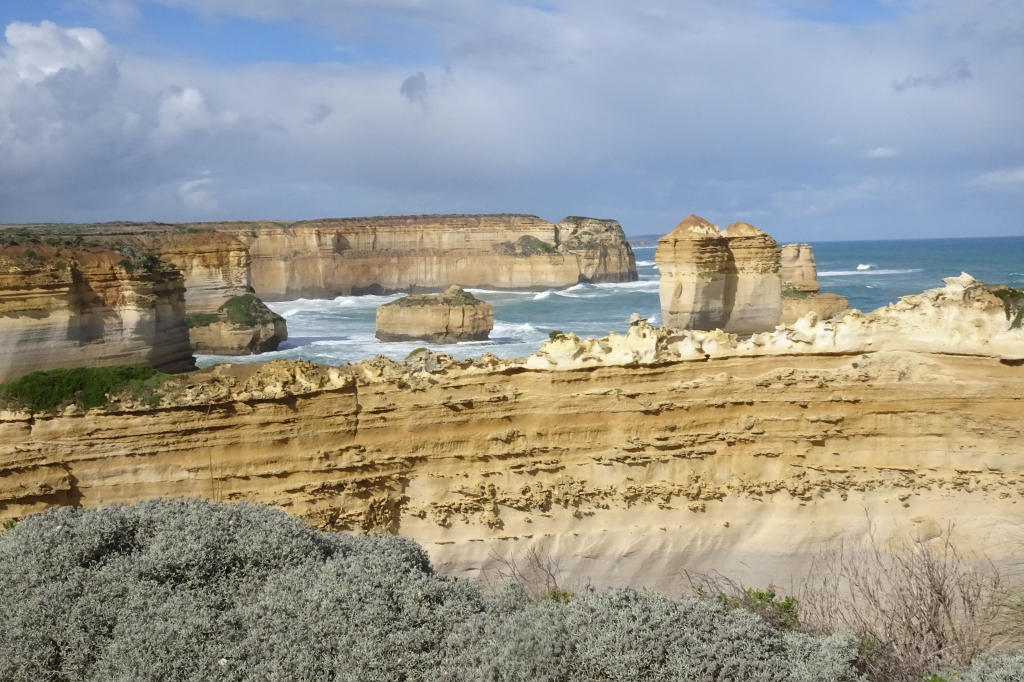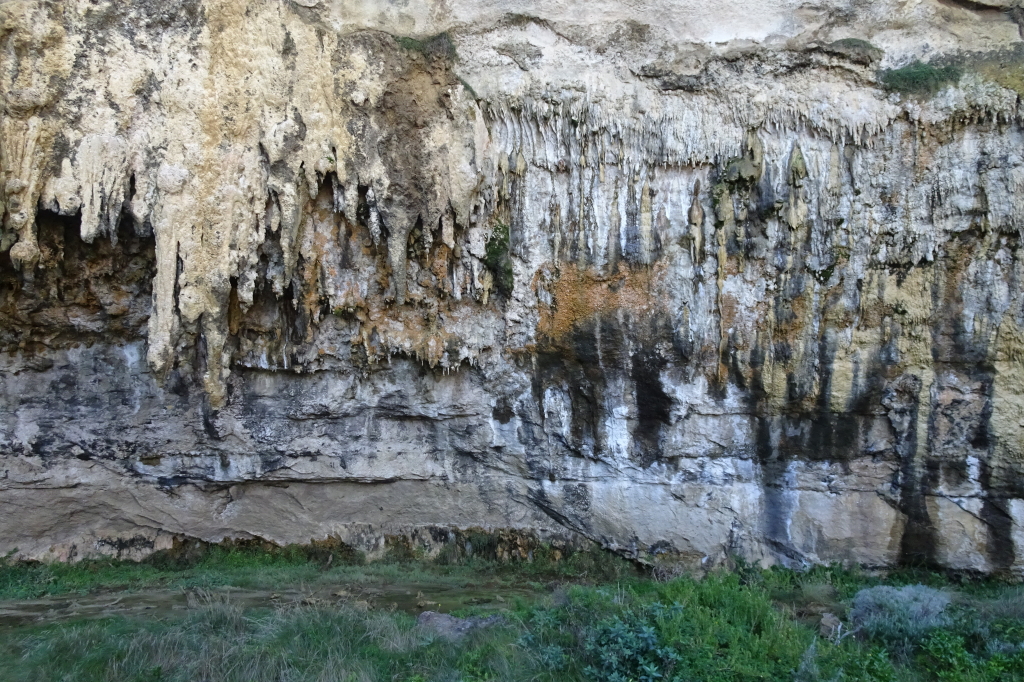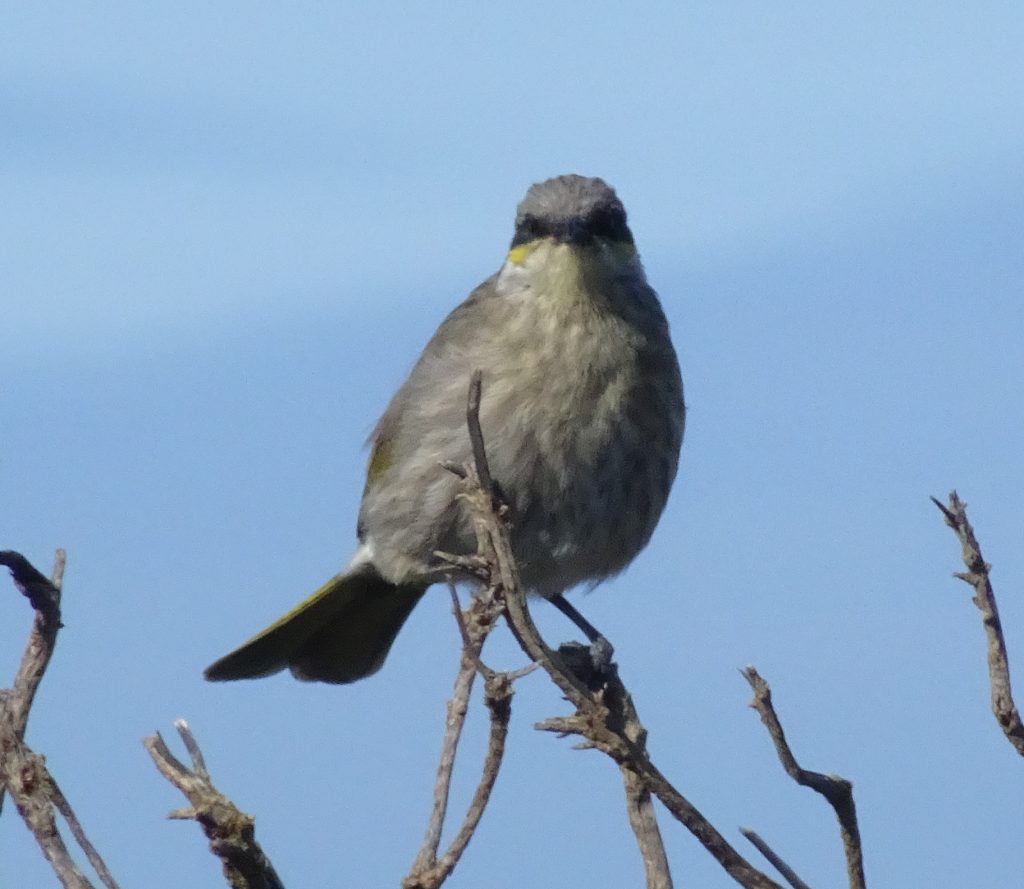Just over one hundred people converged on Port Campbell for the Autumn state-wide gathering of field naturalists, held over the extended weekend of Friday 28th April to Monday 1st May. The event was hosted by the Timboon FNC, with convenor Helen Langley and Sally Loveridge leading the organization of the camp in fine style. It was great to see nine LVFNC members participating, perhaps encouraged to learn more about how SEANA camps work, given that our club (jointly with Sale & District FNC) is to host the Spring gathering in Yarram in October this year. In all, there were thirteen SEANA clubs represented at the camp.
The base for evening presentations, meetings (AGM and a general meeting) and dinners was the Port Campbell Surf Club, a fine facility spectacularly located at the western end of the beach at the head of the narrow cove beside which the town is located. The Port Campbell National Park extends along the coast in both directions, which has mercifully tightly limited any expansion of the residential area.
Timboon FNC has hosted several SEANA camps over the last thirty or so years, taking advantage of its proximity to the Otways, the Western Victorian volcanics and the SW Victorian coast. At this camp, the focus was on the compact coastal region between Princetown and Peterborough, thereby minimizing the amount of driving required.
In Chapter 21 of their recently published text Stories beneath our feet, Costermans and VandenBerg well describe the geomorphology of this region:
“All the coastal features (from Princetown to the Bay of Islands) are in the Miocene Port Campbell Limestone, which is made up of near-horizontal layers of clay and silt as well as calcarenites and sandy limestones, deposited on a marine continental shelf between about 16 and 8 million years ago. … The whole formation is up to 150 metres thick, but only 20-50 metres is presently exposed in the cliffs.”
“The coastline is continuing to retreat in a very irregular way. Originally it was well seaward of the present stacks and islands which are merely remnants after erosion, while the bays, coves and caves indicate where the most active removal of rock material is presently occurring – intertidal shore platforms rarely form on this coastal sector.”
The authors go on to explain that the rock material, being relatively soft and having a substantial calcium carbonate component, is subject to solution, leading to the development of caves and sinkholes which often become the core of indentations in the coastline that we see today.
All excursions were of a half-day duration, from Saturday morning through to Monday morning, with the camp concluding after lunch. There were five alternatives available in each timeslot, with most being repeated for flexibility. My own selections were as follows:
Saturday morning: Walk to Halladale Point, the site of the wreck of the ship ‘Falls of Halladale’, a short distance west of Peterborough.
“The four-masted barque FallsofHalladale was 102 days out from New York when it ran ashore at Peterborough at 3am on the morning of 14th November 1908. Within minutes, water poured into the holds and the crew safely disembarked and rowed for three hours until they beached at the Bay of Islands.” (Source: Wikipedia)
Saturday afternoon: Back Tracks Tour, led by Helen Langley

This excursion took in four coastal locations east of Port Campbell, starting with the signposted Geology Walk at Loch Ard Gorge and then heading west to three much quieter sites of geological and botanical interest.
The Razorback stack on the Loch Ard Geology Walk
Sunday morning: Loch Ard Gorge, again with Helen Langley

We first followed The Wreck of the Loch Ard Walk before taking a longer walk to Muttonbird Island, an important breeding site, Thunder Cave, Broken Head and Sherbrooke River. On Broken Head we enjoyed good sightings of the Singing Honeyeater, widely distributed across most of Australia, but not seen (to my knowledge) in our area.
Exposed stalactites at head of Loch Ard Gorge
Sunday afternoon: Discovery Walk at Port Campbell
This excursion followed the Discovery Walk which starts near the Surf Club, crosses Port Campbell Creek and climbs through highly diverse and attractive vegetation to heathland above Two Mile Bay.

Singing Honeyeater at Broken Head
Monday morning: Coast Gully Thicket Walk, near the Port Campbell cemetery
We were introduced to a community project to eradicate weed infestations and extend the Discovery Walk mentioned above, to create a longer circuit trail linking Port Campbell’s coastal and bushland areas.
The three evening talks spanned a wide range of subjects.
On Friday evening, following the welcome to the camp, Marg O’Toole told the story of kelp, covering the recovery work on this remarkably fast-growing marine plant at sites off Port Campbell.
Then, on Saturday, Deakin University research fellow Dr John Sherwood presented on “Megafauna and Footprints to our amazing past”.
Finally, Timboon club member Stephen Mueller outlined his efforts to breed Australian River Blackfish and reintroduce the species to local waterways.
Sunday evening brought the happy event of the Timboon club’s award of Life Membership to Helen Langley for her outstanding service and dedication over many years. Grateful thanks go to Helen and her team of club members for hosting a really enjoyable camp in the convivial spirit for which SEANA is known. On top of that, the weather was perfect, not something that can be taken for granted in that part of Victoria!